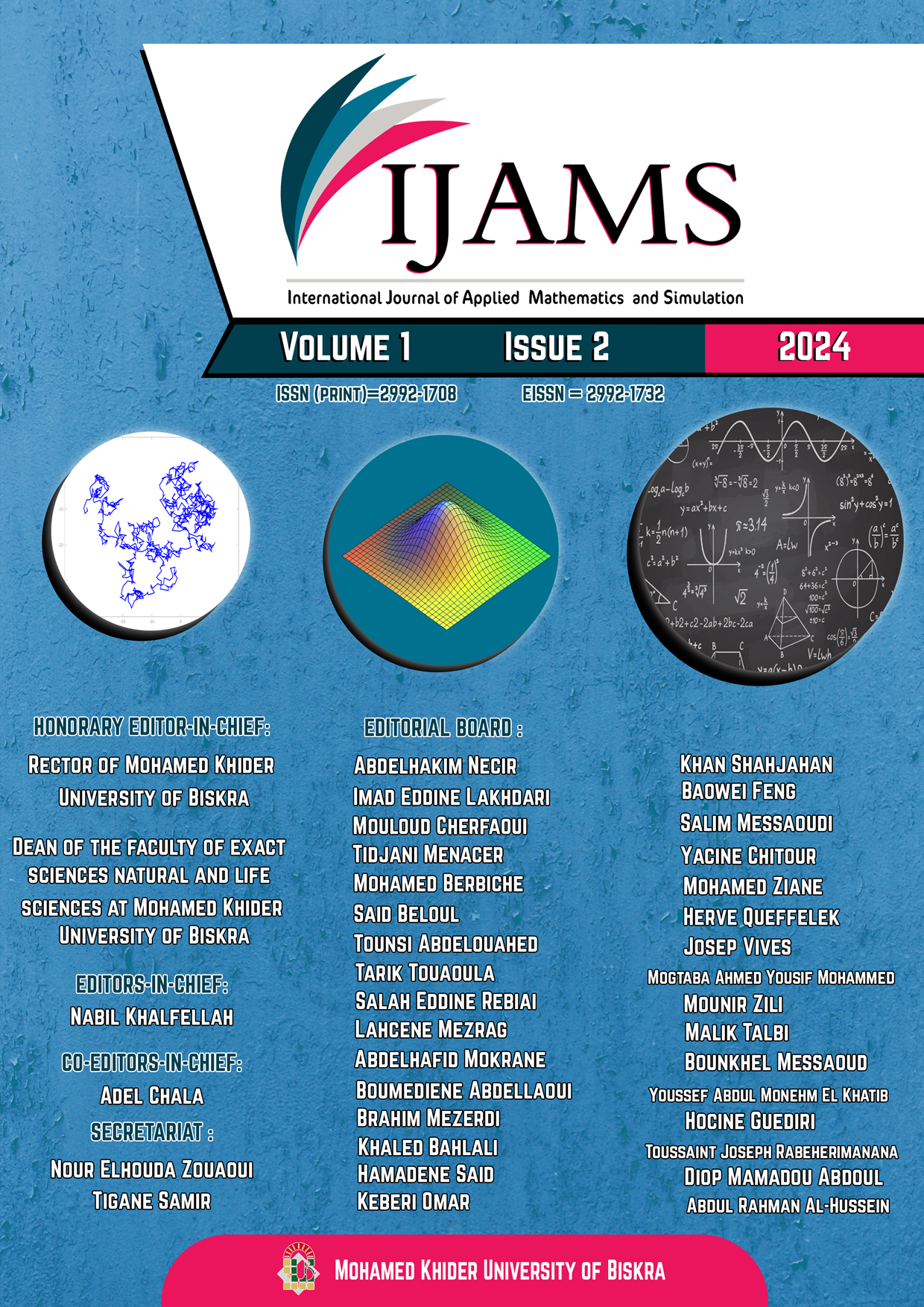A Log-Probability-Weighted-Moments type estimator for the extreme value index in a truncation scheme
Résumé
The limit theorems of asymptotic behavior of tail index estimators for right truncation Pareto-like data requires some regularity assumptions either on tail indices (γ1 < γ2) or on the dependence structure condition between the truncation variable and the interest one. In this paper, we introduce a new estimator for the tail index based on the Log-Probability-Weighted-Moments method and, getting rid of aforementioned assumptions, we establish its consistency and asymptotic normality. We show, by simulation, that the newly proposed estimator behaves well both in terms of bias and mean squared error.
Keywords: Empirical process, Extreme value index, Product-limit estimator, Truncated data.
MSC: Primary 62G32, 62G30, Secondary 60G70, 60F17
REFERENCES
[1] Alexander, K. S. (1986). Sample moduli for set-indexed Gaussian processes. The Annals of Probability, 14(2), 598-611. Search in Google Scholar. https://doi.org/10.1214/aop/1176992533
[2] Benchaira, S., Meraghni, D., & Necir, A. (2015). On the asymptotic normality of the extreme value index for right-truncated data. Statistics & Probability Letters, 107, 378-384. Search in Google Scholar. https://doi.org/10.1016/j.spl.2015.08.031
[3] Benchaira, S., Meraghni, D., & Necir, A. (2016). Tail product-limit process for truncated data with application to extreme value index estimation. Extremes, 19(2), 219-251. Search in Google Scholar. https://doi.org/10.1007/s10687-016-0241-9
[4] Benchaira, S., Meraghni, D., & Necir, A. (2016). Kernel estimation of the tail index of a right-truncated Pareto-type distribution. Statistics & Probability Letters, 119, 186-193. Search in Google Scholar. https://doi.org/10.1016/j.spl.2016.08.004
[5] Caeiro, F., & Prata Gomes, D. (2015). A log probability weighted moment estimator of extreme quantiles. In Theory and Practice of Risk Assessment: ICRA 5, Tomar, Portugal, 2013 (pp. 293-303). Springer International Publishing. Search in Google Scholar. https://doi.org/10.1007/978-3-319-18029-8_22.
[6] Einmahl, J. H. (1992). Limit theorems for tail processes with application to intermediate quantile estimation. Journal of Statistical Planning and Inference, 32(1), 137-145. Serach in Giigle Scholar. https://doi.org/10.1016/0378-3758(92)90156-M.
[7] Gardes, L., & Stupfler, G. (2015). Estimating extreme quantiles under random truncation. Test, 24(2), 207-227. Search in Google Scholar. https://doi.org/10.1007/s11749-014-0403-5.
[8] De Haan, L., & Stadtmüller, U. (1996). Generalized regular variation of second order. Journal of the Australian Mathematical Society, 61(3), 381-395. Search in Google Scholar. https://doi.org/10.1017/S144678870000046X
[9] Haan, L., & Ferreira, A. (2006). Extreme value theory: an introduction (Vol. 3). New York: springer. Search in Google Scholar. https://doi.org/10.1007/0-387-34471-3.
[10] Hill, B. M. (1975). A simple general approach to inference about the tail of a distribution. The annals of statistics, 1163-1174. Search in Google Scholar. http://www.jstor.org/stable/2958370
[11] Haouas, N., Necir, A., & Brahimi, B. (2019). Estimating the second-order parameter of regular variation and bias reduction in tail index estimation under random truncation. Journal of Statistical Theory and Practice, 13(1), 7. Search in Google Scholar. https://doi.org/10.1007/s42519-018-0017-4.
[12] Hua, L., & Joe, H. (2011). Second order regular variation and conditional tail expectation of multiple risks. Insurance: Mathematics and Economics, 49(3), 537-546. Search in Google Scholar. https://doi.org/10.1016/j.insmatheco.2011.08.013.
[13] Lawless, J. F. (2011). Statistical models and methods for lifetime data. John Wiley & Sons. Search in Google Scholar. View a book.
[14] Mancer, S., Necir, A., & Benchaira, S. (2023). Bias Reduction in Kernel Tail Index Estimation for Randomly Truncated Pareto-Type Data. Sankhya A, 85(2), 1510-1547. Search in Google Scholar. https://doi.org/10.1007/s13171-022-00303-5.
[15] Thomas, M. (2001). Statistical analysis of extreme values: with applications to insurance, finance, hydrology, and other fields. Birkhäuser Verlag. Search in Google Scholar.
[16] Schmidt, R., & Stadtmüller, U. (2006). Non‐parametric estimation of tail dependence. Scandinavian journal of statistics, 33(2), 307-335. Search in Google Scholar. https://doi.org/10.1111/j.1467-9469.2005.00483.x
[17] Shorack, G. R., & Wellner, J. A. (2009). Empirical processes with applications to statistics. Society for Industrial and Applied Mathematics. Search in Google Scholar. View book.
[18] Woodroofe, M. (1985). Estimating a distribution function with truncated data. The Annals of Statistics, 13(1), 163-177. Search in Google Scholar. https://doi.org/10.1214/aos/1176346584.
[19] Worms, J., & Worms, R. (2016). A Lynden-Bell integral estimator for extremes of randomly truncated data. Statistics & Probability Letters, 109, 106-117. Search in Google Scholar. https://doi.org/10.1016/j.spl.2015.11.011.
Communicated Editor: Cherfaoui Mouloud
Manuscript received Jan 23, 2024; revised May 13, 2024; accepted May 18, 2024; published Dec 07, 2024.



